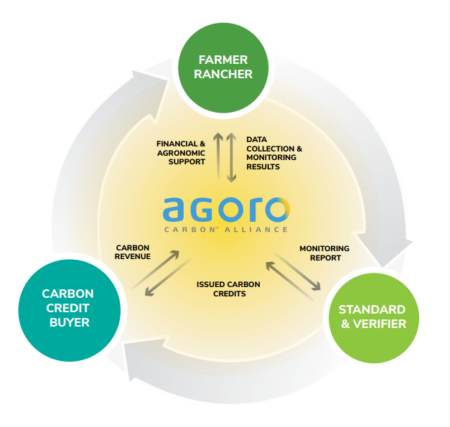Frequently Asked Questions
Agricultural carbon credits are verified carbon dioxide (CO2) tons, or an equivalent amount of another greenhouse gas (GHG), avoided and removed from the atmosphere because of the implementation of regenerative agricultural land management activities on cropland and pastureland. Agricultural carbon credits are considered a Natural Climate Solution (NCS), the conservation, restoration, and improved management of ecosystems to reduce or remove greenhouse gases from the atmosphere. Implementing these regenerative agricultural practices that create Agoro Carbon credits lead to increased carbon sequestration rates in the soil, reduced soil disturbance and erosion, increased crop residue, improved water management, and improved forage quality and quantity. Additional benefits include improvements in soil, water, and air quality, biological diversity enhancement, the provision of natural habitats, and ecosystem functioning.
Simply get in touch by clicking here and provide us with your contact info. Our commercial team will then get in touch with you as soon as possible to discuss your carbon credit buying needs and provide you with more information.
Agoro Carbon participants implement a package of regenerative agricultural land management practices. On croplands, these activities include but are not limited to reduced and zero tillage and cover cropping. On pastureland, activities involve implementing nutrient management, increased species diversity, rotational grazing, and other regenerative practices.
Soil, water, social, financial, and biodiversity. There is ample research that shows that the regenerative practices supported by Agoro Carbon can lead to better water use efficiency, reduced soil erosion, increased biodiversity, and increased crop resilience to extreme weather events.
Agoro Carbon credits are additional and encompass strong permanence characteristics contribute to a variety of benefits beyond carbon reduction and sequestration, and are reinforced by a robust MRV framework underpinned by physical soil sample measurements for baselining and verification, and enhanced through precise modeling.


